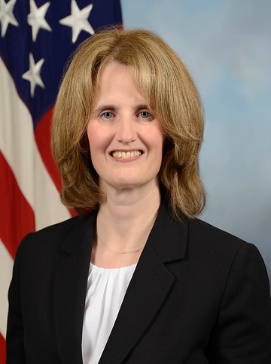
The Defense Advanced Research Projects Agency (DARPA) is a research and development agency of the United States Department of Defense responsible for the development of emerging technologies for use by the military.
Open source intelligence (OSINT) is the collection and analysis of data gathered from open sources to produce actionable intelligence. OSINT is primarily used in national security, law enforcement, and business intelligence functions and is of value to analysts who use non-sensitive intelligence in answering classified, unclassified, or proprietary intelligence requirements across the previous intelligence disciplines.

The Director of National Intelligence (DNI) is a senior, cabinet-level United States government official, required by the Intelligence Reform and Terrorism Prevention Act of 2004 to serve as executive head of the United States Intelligence Community (IC) and to direct and oversee the National Intelligence Program (NIP). All IC agencies report directly to the DNI. The DNI also serves, upon invitation, as an advisor to the president of the United States, the National Security Council and the Homeland Security Council on all intelligence matters. The DNI, supported by the Office of the Director of National Intelligence (ODNI), produces the President's Daily Brief (PDB), a classified document including intelligence from all IC agencies, handed each morning to the president of the United States.

J. Michael "Mike" McConnell is a former vice admiral in the United States Navy. He served as Director of the National Security Agency from 1992 to 1996 and as the United States Director of National Intelligence from February 2007 to January 2009 during the Bush administration and first week of the Obama administration. As of January 2024, he is the Vice Chairman at Booz Allen Hamilton.

The United States Intelligence Community (IC) is a group of separate United States government intelligence agencies and subordinate organizations that work both separately and collectively to conduct intelligence activities which support the foreign policy and national security interests of the United States. Member organizations of the IC include intelligence agencies, military intelligence, and civilian intelligence and analysis offices within federal executive departments.

The Disruptive Technology Office (DTO) was a funding agency within the United States Intelligence Community. It was previously known as the Advanced Research and Development Activity (ARDA). In December 2007, DTO was folded into the newly created IARPA.
Homeland Security Advanced Research Projects Agency (HSARPA) is a part of the Science and Technology Directorate at the United States Department of Homeland Security. Much like DARPA in the Department of Defense, HSARPA is tasked with advanced projects to advance the technology needed to protect the US. Some of the chief beneficiaries of HSARPA are the Customs and Border Protection, and the Office of Intelligence and Analysis.

Jason Gaverick Matheny is a United States national security expert serving as president and CEO of the RAND Corporation since July 2022. He was previously a senior appointee in the Biden administration from March 2021 to June 2022. He served as deputy assistant to the president for technology and national security, deputy director for national security in the White House Office of Science and Technology Policy and coordinator for technology and national security at the White House National Security Council.

Intellipedia is an online system for collaborative data sharing used by the United States Intelligence Community (IC). It was established as a pilot project in late 2005 and formally announced in April 2006. Intellipedia consists of three wikis running on the separate JWICS (Intellipedia-TS), SIPRNet (Intellipedia-S), and DNI-U (Intellipedia-U) networks. The levels of classification allowed for information on the three wikis are Top Secret Sensitive Compartmented Information, Secret (S), and Sensitive But Unclassified information, respectively. Each of the wikis is used by individuals with appropriate clearances from the 18 agencies of the US intelligence community and other national-security related organizations, including Combatant Commands and other federal departments. The wikis are not open to the public.

Lisa J. Porter is an American scientist and founding Director of the Intelligence Advanced Research Projects Activity. Prior to this position, she was the Associate Administrator for Aeronautics Research at NASA and a senior scientist in the Advanced Technology Office of the Defense Advanced Research Projects Agency.
ARPA-E, or Advanced Research Projects Agency–Energy is a United States government agency tasked with promoting and funding research and development of advanced energy technologies. It is modeled after the Defense Advanced Research Projects Agency (DARPA).

In the United States the Associate Director of National Intelligence and Chief Information Officer is charged with directing and managing activities relating to information technology for the Intelligence Community (IC) and the Office of the Director of National Intelligence (ODNI). The IC CIO reports directly to the Director of National Intelligence (DNI). As of January 24, 2022, Dr. Adele Merritt has assumed duties as the IC Chief Information Officer.
Aggregative Contingent Estimation (ACE) was a program of the Office of Incisive Analysis (OIA) at the Intelligence Advanced Research Projects Activity (IARPA). The program ran from June 2010 until June 2015.
The National Strategic Computing Initiative (NSCI) is a United States initiative calling for the accelerated development of technologies for exascale supercomputers, and funding research into post-semiconductor computing. The initiative was created by an executive order issued by President Barack Obama in July 2015. Ten United States government departments and independent agencies are involved in the initiative. The initiative initially brought together existing programs, with some dedicated funding increases proposed in the Obama administration's 2017 budget request. The initiative's strategic plan was released in July 2016.

Susan M. Gordon served as Principal Deputy Director of National Intelligence until August 15, 2019. Prior to assuming that role, she was the Deputy Director of the National Geospatial-Intelligence Agency (NGA), having assumed the position on January 1, 2015. Before joining the NGA, she served as director of the Central Intelligence Agency's Information Operations Center and senior cyber adviser to the Director of the Central Intelligence Agency. Gordon worked for the CIA for over 25 years.

The Quantum Information Science and Technology Program was a five-year, $100M DARPA research program that ran from FY 2001 – 2005. The initiative was jointly created by the Defense Sciences Office (DSO) and the Information Technology Office (ITO) to accelerate development in the field of quantum computing, quantum communications, quantum algorithms, and other high-priority quantum information applications. As a completed program, QuIST received an award from DARPA in 2008 for scientific breakthroughs previously conducted under its support.

Quantum Entanglement Science and Technology (QuEST) is a research program, announced by the DARPA Microsystems Technology Office (MTO) in 2008. As a follow-on to the QuIST Program, its goal was to further accelerate development in the field of quantum information science.

IonQ is a quantum computing hardware and software company based in College Park, Maryland. They are developing a general-purpose trapped ion quantum computer and software to generate, optimize, and execute quantum circuits.

Stacey Angela Dixon is an American mechanical engineer and intelligence official and Principal Deputy Director of National Intelligence in the Biden Administration since August 4, 2021.














